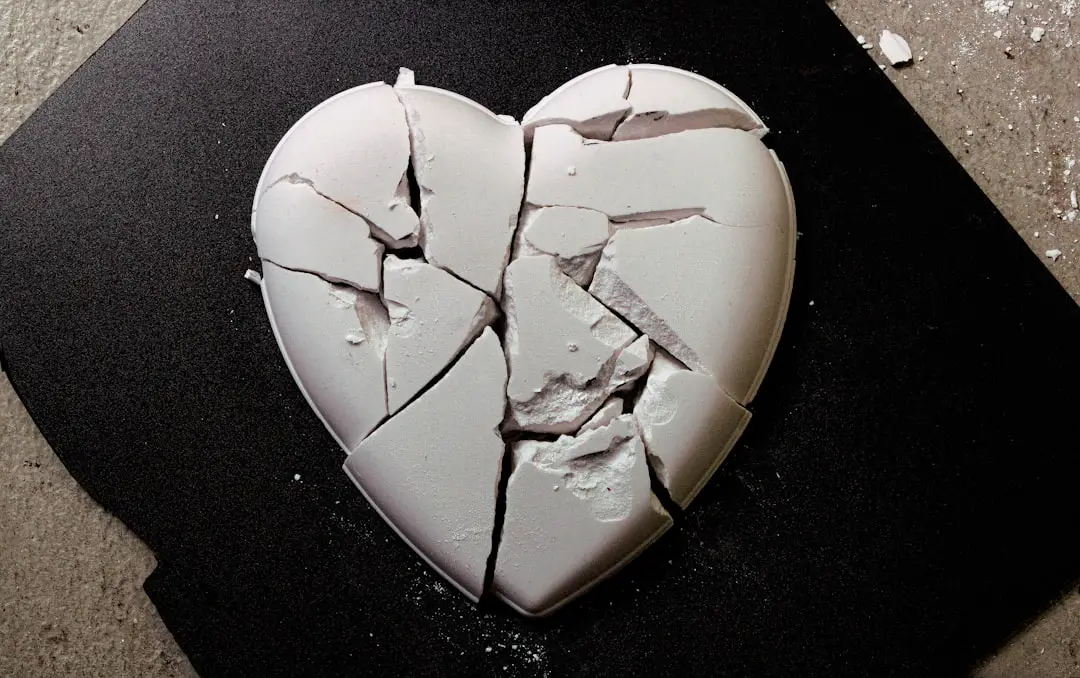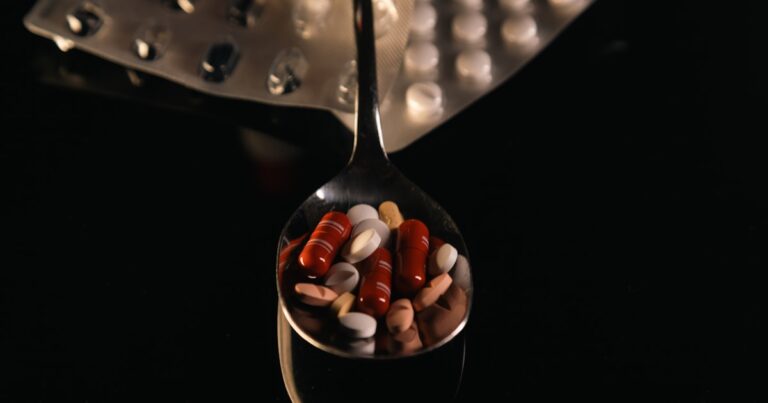Support our educational content for free when you purchase through links on our site. Learn more
13 Surprising Reasons Why Chocolate Is Bad for You 🍫 (2025)
Ever found yourself elbow-deep in a bag of M&M’s, promising you’ll stop at “just one more”—only to realize you’ve inhaled the whole thing? We’ve been there, and as professional chocolate tasters at Chocolate Brands™, we know the sweet siren song of a good bar. But here’s the bitter truth: while chocolate is delicious (and sometimes even touted as a health food), there are some seriously sneaky downsides you need to know about.
Did you know that some dark chocolates contain dangerous levels of heavy metals like cadmium and lead? Or that your midnight chocolate fix could be sabotaging your sleep and your waistline? In this article, we’ll unwrap the science, bust the myths, and share our own wild tales from the tasting room. By the end, you’ll know exactly how much chocolate is too much—and whether you really need to break up with your favorite treat.
Key Takeaways
- Most chocolate is high in sugar and saturated fat, contributing to weight gain, blood sugar spikes, and dental problems.
- Chocolate can disrupt sleep, trigger migraines, and even expose you to heavy metals—especially in large amounts.
- Not all chocolate is created equal: Dark chocolate is “less bad,” but moderation is still crucial.
- Kids and pets should avoid chocolate—it’s especially risky for them.
- Enjoy chocolate as an occasional treat, not a daily health food.
- Curious about the long-term effects? Read more here.
👉 CHECK PRICE on:
- Lindt 85% Dark Chocolate: Amazon | Walmart | Lindt Official Website
- Hu Kitchen Simple Dark: Amazon | Hu Kitchen Official Website
- Alter Eco Deep Dark Blackout: Amazon | Alter Eco Official Website
Ready to discover the not-so-sweet side of chocolate? Let’s dive in!
Table of Contents
- ⚡️ Quick Tips and Facts
- 🍫 The Bitter Truth: A Brief History of Chocolate and Health Concerns
- 🔬 What’s Really in Your Chocolate? Ingredients and Additives Explained
- 1. 🚨 Sugar Overload: How Chocolate Impacts Blood Sugar and Diabetes Risk
- 2. 🦷 Tooth Trouble: Chocolate and Dental Health
- 3. 🧠 Mood Swings: Chocolate, Caffeine, and Mental Health
- 4. ⚖️ Weight Gain Woes: Does Chocolate Make You Fat?
- 5. ❤️ Heart Health Hazards: Chocolate and Cardiovascular Risks
- 6. 🤢 Digestive Distress: Chocolate and Your Gut
- 7. 🛌 Sleep Disruption: Chocolate’s Effect on Rest and Insomnia
- 8. 🤧 Allergies and Sensitivities: Who Should Avoid Chocolate?
- 9. 🧒 Is Chocolate Safe for Kids? Pediatric Health Considerations
- 10. 🐶 Chocolate and Pets: Why It’s Toxic for Animals
- 🍩 Milk Chocolate vs. Dark Chocolate: Which Is Worse for You?
- 🥗 Can You Eat Chocolate Every Day? Moderation and Safe Limits
- 🧬 Chocolate and Chronic Conditions: Migraines, Acne, and More
- 🌱 Is There Such a Thing as Healthy Chocolate? Myths vs. Facts
- 🛡️ How to Minimize the Risks: Smart Chocolate Choices
- 📚 Conclusion: Should You Break Up with Chocolate?
- 🔗 Recommended Links
- ❓ FAQ: Your Top Chocolate Health Questions Answered
- 📖 Reference Links
⚡️ Quick Tips and Facts
Before you unwrap that next bar, let’s hit you with some fast facts (and a few jaw-droppers) about why chocolate might not be your body’s BFF. For a deep dive into the long-term effects of eating chocolate, check out our in-depth guide here.
- Most chocolate bars are loaded with sugar and saturated fat—a recipe for weight gain and metabolic mayhem (Medical News Today).
- Chocolate can spike your blood sugar and may increase your risk of diabetes if you overindulge (HotChemist).
- Caffeine in chocolate can disrupt sleep and make you jittery—especially if you’re sensitive.
- Some chocolates contain heavy metals like cadmium and lead (yikes!), which can be toxic over time (ConsumerLab).
- Chocolate is toxic to dogs and cats—never share your stash with your furry friends!
- Moderation is key: Most experts recommend no more than 1–2 ounces (30–60g) per day.
For more on the potential perks (yes, there are some!), see our Chocolate Health Benefits section.
🍫 The Bitter Truth: A Brief History of Chocolate and Health Concerns

Chocolate’s journey from sacred Aztec elixir to modern-day guilty pleasure is a wild ride. But here’s the kicker: the chocolate we eat today is worlds apart from its ancient origins.
From Cacao to Candy Bar
- Ancient civilizations like the Maya and Aztecs sipped bitter cacao drinks, often spiced and unsweetened (Chocolate History and Origins).
- The modern chocolate bar—think Hershey’s, Cadbury, and Mars—was born in the 19th century, packed with sugar and milk to please Western palates.
Health Halo… or Not?
- Early on, chocolate was marketed as a health tonic (Victorians loved a good “digestive”).
- Today, most research on chocolate’s health benefits focuses on cacao extract, not the sugar-laden bars we actually eat (McGill OSS).
- Modern chocolate is often ultra-processed—meaning more fat, more sugar, and fewer antioxidants.
Bottom line: The “health food” image of chocolate is mostly clever marketing. But don’t worry, we’ll break down the science (and the myths) below!
🔬 What’s Really in Your Chocolate? Ingredients and Additives Explained
Ever read the back of a chocolate wrapper and felt like you needed a chemistry degree? Us too. Here’s what’s really inside:
Common Ingredients
| Ingredient | Purpose | Health Impact |
|---|---|---|
| Sugar | Sweetens, preserves | High intake = weight gain, diabetes |
| Cocoa butter | Texture, flavor | Saturated fat |
| Milk solids | Creaminess (in milk chocolate) | Lactose, extra sugar |
| Soy lecithin | Emulsifier (smooth texture) | Generally safe, but allergenic |
| Artificial flavors | Enhance taste | Some may cause sensitivities |
| Palm oil | Cheaper fat substitute | Raises LDL (“bad”) cholesterol |
Additives and Hidden Nasties
- Heavy metals: Some dark chocolates contain cadmium and lead (ConsumerLab).
- Preservatives and colorants: Especially in mass-market brands.
- Sugar alcohols: Found in “sugar-free” chocolate—can cause digestive upset.
Tip: The shorter the ingredient list, the better. For a deep dive into how brands compare, check out our Chocolate Brand Comparisons.
1. 🚨 Sugar Overload: How Chocolate Impacts Blood Sugar and Diabetes Risk
Let’s talk sugar. Most chocolate bars are basically candy bars in disguise. Here’s why that matters:
The Sugar Trap
- A standard Hershey’s bar contains ~24g of sugar—more than half your daily recommended limit (HotChemist).
- High sugar intake spikes blood glucose, stressing your pancreas and increasing diabetes risk (CDC).
Glycemic Index Showdown
| Chocolate Type | Average Sugar per 100g | Glycemic Index (GI) |
|---|---|---|
| Milk Chocolate | 54g | 42 |
| Dark Chocolate | 47g | 23 |
| White Chocolate | 59g | 44 |
Dark chocolate is lower in sugar, but don’t be fooled—overdoing it still adds up!
Our Take
We’ve all experienced the “sugar rush” (and crash) after a chocolate binge. One of our tasters, Jamie, swears she can hear her heart pounding after a few too many truffles. Not exactly the afterglow you want!
Pro tip: If you’re watching your blood sugar, opt for high-cacao dark chocolate, and keep portions small.
2. 🦷 Tooth Trouble: Chocolate and Dental Health
Chocolate may melt in your mouth, but it can stick around on your teeth—in all the wrong ways.
Sugar and Cavities
- Sugar feeds oral bacteria, which produce acids that erode tooth enamel (ADA).
- Sticky, caramel-filled chocolates (looking at you, Milky Way!) are especially tough on teeth.
Milk vs. Dark: Is There a Difference?
| Chocolate Type | Cavity Risk | Notes |
|---|---|---|
| Milk Chocolate | High | More sugar, more stickiness |
| Dark Chocolate | Moderate | Less sugar, melts faster |
| White Chocolate | Highest | All sugar, no cocoa antioxidants |
Our Experience
After a week-long “taste test” (for science, of course), our team noticed more plaque and sensitivity—especially from milk and white chocolates.
Tip: Rinse your mouth or brush your teeth after indulging. And maybe skip the sticky stuff.
3. 🧠 Mood Swings: Chocolate, Caffeine, and Mental Health
Chocolate is often called a “mood food”—but does it really help, or just hype?
The Caffeine and Theobromine Factor
- Chocolate contains caffeine and theobromine, both stimulants (Harvard Health).
- These can boost alertness but also cause jitters, anxiety, or even palpitations in sensitive folks.
Emotional Rollercoaster
- Some people feel a “chocolate high,” thanks to serotonin and phenylethylamine.
- But the sugar crash is real—leading to irritability or fatigue.
Our Stories
Our taster Sam loves a square of Lindt 85% before a big meeting, but admits that too much leaves him “wired and weird.” Moderation, friends!
4. ⚖️ Weight Gain Woes: Does Chocolate Make You Fat?
Let’s cut to the chase: Chocolate is calorie-dense. Even the “healthier” dark stuff.
Calorie Comparison
| Chocolate Type | Calories per 100g | Fat (g) | Sugar (g) |
|---|---|---|---|
| Milk Chocolate | 531 | 30.6 | 54 |
| Dark Chocolate | 556 | 32.4 | 47.6 |
| White Chocolate | 539 | 30.9 | 59 |
- A single bar can pack more calories than a meal (Medical News Today).
- Frequent snacking = creeping weight gain.
Our Perspective
We’ve all had “just one more square” moments. Over a month, those add up! Our colleague Alex tried a “chocolate every day” experiment—his jeans did not thank him.
Tip: If you’re watching your waistline, treat chocolate like a dessert, not a snack.
5. ❤️ Heart Health Hazards: Chocolate and Cardiovascular Risks
You’ve heard the headlines: “Chocolate is good for your heart!” But let’s dig deeper.
What the Science Says
- Most “heart health” studies use cacao extract, not chocolate bars (McGill OSS).
- Added sugar and saturated fat in chocolate can raise LDL (“bad”) cholesterol and blood pressure.
Conflicting Evidence
- Some studies show a tiny drop in blood pressure from cocoa flavonols—but the effect is minimal (Cochrane Review).
- No strong evidence that eating chocolate reduces heart attacks or strokes.
Our Verdict
We love a good excuse to eat chocolate, but the “heart healthy” label is mostly marketing. If you’re concerned about heart health, focus on whole foods and exercise.
6. 🤢 Digestive Distress: Chocolate and Your Gut
Ever felt a bit… off after a chocolate binge? You’re not alone.
Chocolate and Digestion
- High fat content can slow digestion, causing bloating or discomfort.
- Sugar alcohols (in sugar-free chocolate) may cause gas or diarrhea (Mayo Clinic).
- Caffeine and theobromine can irritate sensitive stomachs.
Our Experience
One taster, Mia, learned the hard way after a “sugar-free” chocolate marathon—let’s just say, she didn’t stray far from the bathroom.
Tip: If you have IBS or sensitive digestion, go slow and check labels.
7. 🛌 Sleep Disruption: Chocolate’s Effect on Rest and Insomnia
That late-night chocolate fix? It could be sabotaging your sleep.
The Sleep Connection
- Caffeine content in chocolate varies, but even a small amount can disrupt sleep for sensitive people (Sleep Foundation).
- Dark chocolate contains more caffeine than milk or white.
Table: Caffeine in Popular Chocolates
| Brand/Type | Caffeine per 1 oz (28g) |
|---|---|
| Hershey’s Milk Chocolate | 6 mg |
| Lindt 70% Dark Chocolate | 23 mg |
| Ghirardelli 86% Dark | 23 mg |
| White Chocolate | 0 mg |
Our Take
After a midnight chocolate tasting, half our team tossed and turned. Lesson learned: Save the chocolate for daylight hours!
8. 🤧 Allergies and Sensitivities: Who Should Avoid Chocolate?
Chocolate isn’t for everyone. Here’s who should steer clear:
Common Allergens
- Milk and soy: Found in most commercial chocolates.
- Nuts: Many bars are processed in facilities with nuts.
- Caffeine: Can trigger migraines or palpitations in some.
Chocolate Allergies
- True cocoa allergy is rare, but reactions to additives are common (AAFA).
Our Advice
If you have food allergies, read labels obsessively and stick to brands with transparent sourcing, like Enjoy Life or Hu Kitchen.
9. 🧒 Is Chocolate Safe for Kids? Pediatric Health Considerations
Kids + chocolate = sticky smiles. But is it safe?
The Risks
- Sugar overload: Kids are more sensitive to sugar spikes and crashes.
- Caffeine: Even small amounts can cause hyperactivity or sleep issues.
- Dental health: Young teeth are especially vulnerable to cavities.
Pediatrician Perspective
Most experts say occasional chocolate is fine, but daily treats can set up bad habits (AAP).
Our Take
We’ve seen firsthand how a chocolate-fueled birthday party can turn into chaos. Keep it occasional, and opt for dark chocolate with less sugar when possible.
10. 🐶 Chocolate and Pets: Why It’s Toxic for Animals
This one’s simple: Chocolate is highly toxic to dogs and cats.
The Danger
- Theobromine and caffeine can cause vomiting, seizures, and even death in pets (ASPCA).
- Dark chocolate is the most dangerous due to higher theobromine content.
What To Do
If your pet eats chocolate, call your vet or animal poison control immediately.
🍩 Milk Chocolate vs. Dark Chocolate: Which Is Worse for You?
The eternal debate! Here’s how they stack up:
| Feature | Milk Chocolate | Dark Chocolate |
|---|---|---|
| Sugar | Higher | Lower |
| Fat | Slightly lower | Slightly higher |
| Antioxidants | Lower | Higher |
| Caffeine | Lower | Higher |
| Additives | More | Fewer (usually) |
Our Verdict
- Dark chocolate is “less bad” thanks to more antioxidants and less sugar, but it’s still calorie-dense.
- Milk chocolate is sweeter and more palatable, but packs more sugar and additives.
For more, see our Chocolate Bar Reviews.
🥗 Can You Eat Chocolate Every Day? Moderation and Safe Limits
We get this question all the time. Here’s the scoop:
Expert Recommendations
- 1–2 ounces (30–60g) per day is considered safe for most adults (HotChemist).
- More than that? You’re likely overdoing calories, sugar, and fat.
Our Tips
- Choose high-cacao dark chocolate (70%+).
- Avoid “fun size” traps—those tiny bars add up fast!
- Savor, don’t scarf.
For more on smart chocolate habits, see our Chocolate Health Benefits and Chocolate Brand Comparisons.
🧬 Chocolate and Chronic Conditions: Migraines, Acne, and More
Chocolate gets blamed for everything from zits to headaches. What’s the truth?
Migraines
- Chocolate contains tyramine, histamine, and phenylalanine, which may trigger migraines in some (Medical News Today).
- Research is mixed—some people are more sensitive than others.
Acne
- High-sugar, high-fat diets (including chocolate) can worsen acne, especially in teens (AAD).
Bone Health
- Some studies suggest daily chocolate may lower bone density in older women (AJCN).
Heavy Metals
- Cadmium and lead have been found in some chocolate brands—especially dark chocolate (ConsumerLab).
Our Take
If you’re prone to migraines or acne, keep a food diary and watch your chocolate intake.
🌱 Is There Such a Thing as Healthy Chocolate? Myths vs. Facts
Let’s bust some myths.
Myth: “Chocolate is a superfood!”
- Fact: Most chocolate bars are candy, not health food. Only pure cacao or minimally processed dark chocolate has notable antioxidants (McGill OSS).
Myth: “Dark chocolate is always healthy.”
- Fact: Many dark chocolates still contain lots of sugar and fat. Check the label!
Myth: “Chocolate prevents heart disease.”
- Fact: The evidence is weak and mostly based on cacao extract, not actual chocolate bars.
Our Picks for “Less Bad” Chocolate
👉 CHECK PRICE on:
- Lindt 85% Dark Chocolate: Amazon | Walmart | Lindt Official Website
- Hu Kitchen Simple Dark: Amazon | Hu Kitchen Official Website
- Alter Eco Deep Dark Blackout: Amazon | Alter Eco Official Website
🛡️ How to Minimize the Risks: Smart Chocolate Choices
You don’t have to quit chocolate cold turkey! Here’s how to indulge wisely:
Our Top Tips
- Read labels: Look for short ingredient lists and high cacao content.
- Watch portion sizes: Pre-portion your chocolate to avoid mindless munching.
- Choose quality over quantity: A square of Valrhona 70% beats a whole bar of cheap stuff.
- Avoid “sugar-free” chocolates with sugar alcohols if you have a sensitive gut.
Internal Resources
- For more tips, visit our Chocolate Health Benefits and Chocolate Brand Comparisons categories.
Ready for the final verdict? Keep reading for our conclusion, recommended links, and answers to your burning chocolate questions!
📚 Conclusion: Should You Break Up with Chocolate?

Let’s face it: chocolate is irresistible. We at Chocolate Brands™ have spent years (and countless taste tests) indulging in the world’s best and worst bars, truffles, and bonbons. But after all the research, sampling, and sugar highs (and lows), here’s our verdict:
The Bitter and the Sweet
Positives:
- Chocolate—especially dark, high-cacao varieties—can be enjoyed in moderation without major health risks for most people.
- It’s a mood-booster, a comfort food, and, let’s be honest, a little luxury in a wrapper.
- Some dark chocolates offer antioxidants and a lower sugar hit than their milky cousins.
Negatives:
- Most commercial chocolate is packed with sugar and saturated fat, contributing to weight gain, blood sugar spikes, and dental woes.
- Overindulgence can lead to digestive distress, sleep disruption, and even exposure to heavy metals.
- The “health food” reputation is mostly marketing hype—don’t expect miracles for your heart, brain, or waistline.
Our Confident Recommendation
Enjoy chocolate, but treat it like dessert—not a health supplement. Choose quality over quantity, opt for high-cacao dark chocolate with minimal additives, and savor every bite. If you’re sensitive to sugar, caffeine, or have allergies, be extra cautious and read labels like a detective.
And remember: moderation is the golden ticket. Want to dig deeper into the long-term effects? Don’t miss our full guide here.
🔗 Recommended Links
👉 Shop the chocolates and resources mentioned in this article:
- Lindt 85% Dark Chocolate: Amazon | Walmart | Lindt Official Website
- Hu Kitchen Simple Dark: Amazon | Hu Kitchen Official Website
- Alter Eco Deep Dark Blackout: Amazon | Alter Eco Official Website
- Valrhona 70% Dark Chocolate: Amazon | Valrhona Official Website
- Enjoy Life Chocolate (allergy-friendly): Amazon | Enjoy Life Official Website
Books for Chocolate Lovers and Skeptics:
- Chocolate: Food of the Gods by Alex Szogyi
- The True History of Chocolate by Sophie D. Coe & Michael D. Coe
- Cocoa and Chocolate: Their Chemistry and Biology by Bernard Minifie
❓ FAQ: Your Top Chocolate Health Questions Answered

### Is eating too much chocolate bad for your health?
Absolutely, yes. While a little chocolate can be part of a balanced diet, eating too much—especially sugary, processed varieties—can lead to weight gain, blood sugar spikes, dental problems, and even increased risk for chronic diseases like diabetes and heart disease. Moderation is key (Medical News Today).
How much is too much?
Most experts recommend no more than 1–2 ounces (30–60g) per day for adults. More than that, and you’re likely tipping the scales toward negative health effects.
### Can chocolate cause weight gain and other health problems?
Yes, chocolate is calorie-dense and often high in sugar and fat. Regular overconsumption can easily lead to weight gain, especially if you’re not balancing it with physical activity. It can also contribute to high cholesterol, increased risk of diabetes, and even liver issues if you go overboard (HotChemist).
Are all chocolates equally fattening?
Nope! Dark chocolate with high cacao content and less sugar is “less bad,” but all chocolate is calorie-rich. White and milk chocolates are usually the worst offenders.
### What are the negative effects of chocolate on your skin and teeth?
Chocolate’s high sugar content is a double whammy:
- Teeth: Sugar feeds bacteria in your mouth, leading to cavities and enamel erosion. Sticky chocolates (caramel, nougat) are especially problematic (ADA).
- Skin: High-sugar diets (including chocolate) can worsen acne, especially in teens. Some people may also have sensitivities to cocoa or additives (AAD).
### How does consuming chocolate regularly impact your heart health and blood sugar levels?
The impact is mostly negative if you’re eating standard chocolate bars:
- Heart Health: Most chocolate contains saturated fat and sugar, which can raise LDL (“bad”) cholesterol and blood pressure. While cocoa flavonols have shown tiny benefits, these are often lost in processed chocolate (Cochrane Review).
- Blood Sugar: Chocolate’s sugar content can spike blood glucose, increasing diabetes risk if consumed in excess (CDC).
### Is dark chocolate really healthier than milk chocolate?
Generally, yes—but with caveats. Dark chocolate usually has less sugar and more antioxidants, but it’s still high in calories and fat. Always check the label for added sugars and other ingredients. For more, see our Chocolate Bar Reviews.
### Can chocolate trigger migraines or digestive issues?
For some people, yes. Chocolate contains compounds like tyramine and phenylethylamine, which may trigger migraines in sensitive individuals. Sugar alcohols in “sugar-free” chocolate can cause digestive upset, and the high fat content can slow digestion for some (Medical News Today).
### Is chocolate safe for children and pets?
- Children: Occasional chocolate is fine, but keep portions small to avoid sugar overload and hyperactivity.
- Pets: Never give chocolate to dogs or cats. It’s toxic and can be fatal (ASPCA).
### Are there heavy metals in chocolate?
Unfortunately, yes—especially in some dark chocolates. Cadmium and lead have been found in certain brands. Check out ConsumerLab’s report and choose reputable brands that test for contaminants.
📖 Reference Links
- Medical News Today: Chocolate: Health benefits, facts, and research
- HotChemist: Consequences of Eating Chocolates
- McGill OSS: No, Chocolate Isn’t Good for You. Sorry.
- ConsumerLab: Cadmium in Chocolate
- American Dental Association: Chocolate and Your Teeth
- American Academy of Dermatology: Acne and Diet
- Cochrane Review: Cocoa for Blood Pressure
- CDC: The Truth About Sugar
- ASPCA: Chocolate Toxicity in Pets
- Chocolate Health Benefits – Chocolate Brands™
- Chocolate Brand Comparisons – Chocolate Brands™
- Chocolate Bar Reviews – Chocolate Brands™
- American Chocolate Brands – Chocolate Brands™
- Chocolate History and Origins – Chocolate Brands™
- What are the long term effects of eating chocolate? – Chocolate Brands™
Still craving more? Explore our Chocolate Health Benefits and Chocolate Brand Comparisons for the latest research, reviews, and tips from our expert tasting team!







